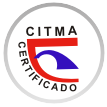Analysis of Steel Towers Using Traditional and Adaptive Pushover Methods: Social Protection Against Seismic Risks
Keywords:
How do structures, Sustainable construction, Structural design, Adaptive methods, Pushover curvesAbstract
This study presents a comparison between pushover curves obtained using the traditional method with an inverted triangular load and the adaptive method, applied to steel towers. The main objective was to evaluate the accuracy of both methods in predicting the nonlinear response under seismic loads, analyzing the influence of higher modes and the redistribution of forces associated with stiffness degradation, as well as differences in displacement predictions and failure patterns. The results show that the traditional method achieves a higher maximum strength, while the adaptive method presents slightly lower strength but allows for greater displacements and provides results closer to those obtained through dynamic analysis. Beyond the technical contribution, this study highlights important social and environmental benefits: the application of more accurate analysis methods helps optimize structural design, resulting in safer and more resilient buildings in the face of earthquakes, thus protecting human lives and reducing material losses. From an environmental perspective, the efficient use of materials derived from a design better suited to actual demands helps decrease steel consumption and waste generation, thereby reducing the carbon footprint associated with construction. Overall, the findings of this work promote the adoption of more sustainable and responsible construction practices, benefiting both society and the environment.
Downloads
Published
How to Cite
Issue
Section
License
Copyright (c) 2025 Editorial "Universo Sur"

This work is licensed under a Creative Commons Attribution-NonCommercial-NoDerivatives 4.0 International License.
La editorial "Universo Sur", de la Universidad de Cienfuegos, publica el contenido de la Revista "Universidad y Sociedad" bajo una Licencia Creative Commons Atribución-NoComercial-SinDerivar 4.0 Internacional.
© Podrá reproducirse, de forma parcial o total, el contenido de esta publicación, siempre que se haga de forma literal y se mencione la fuente.










